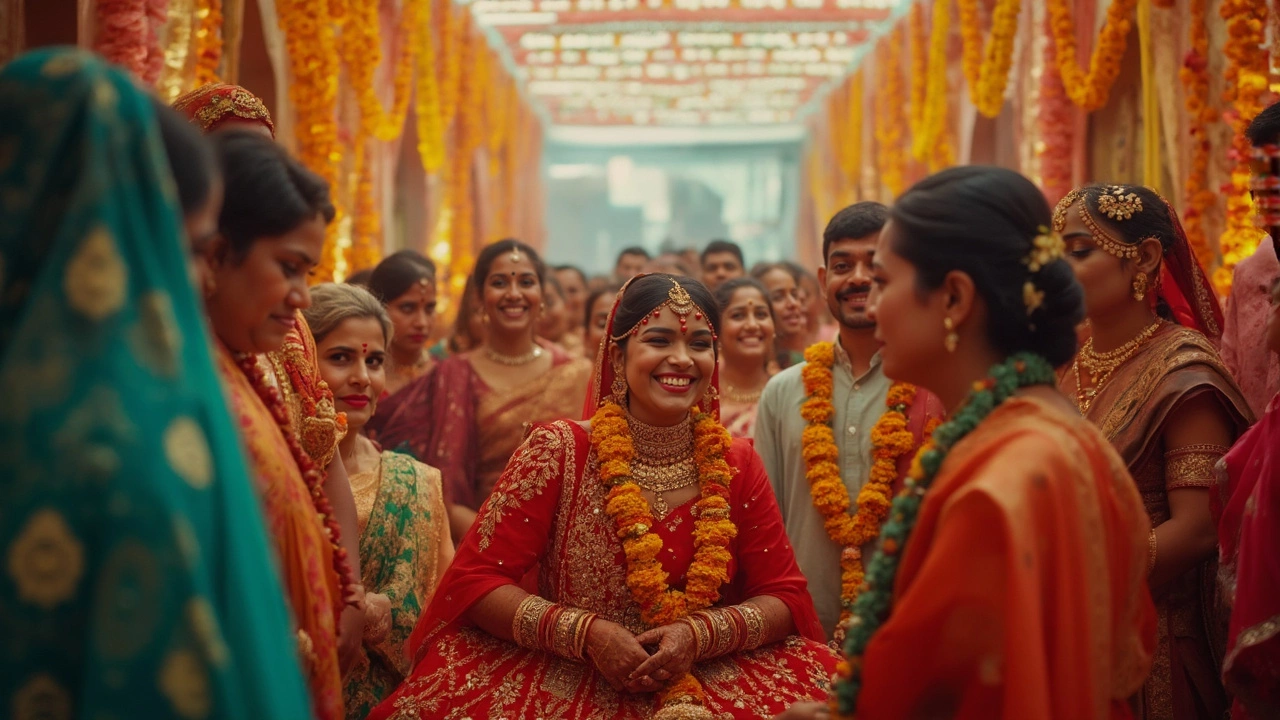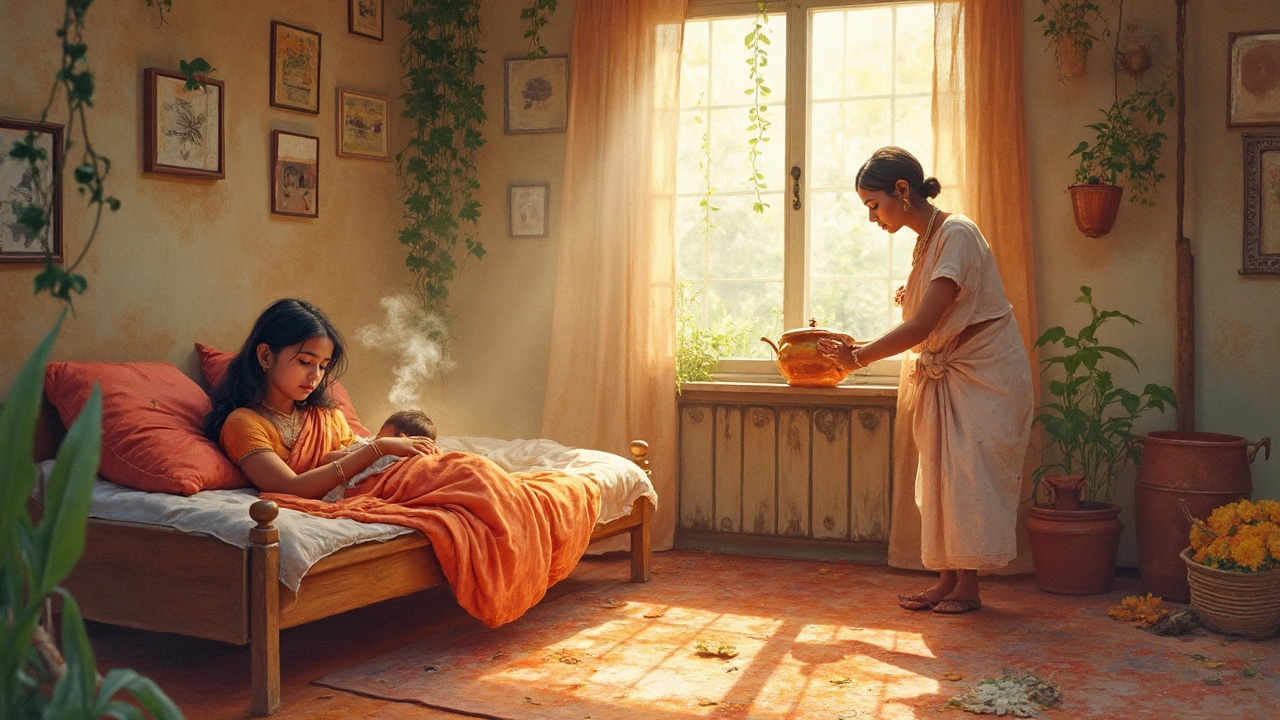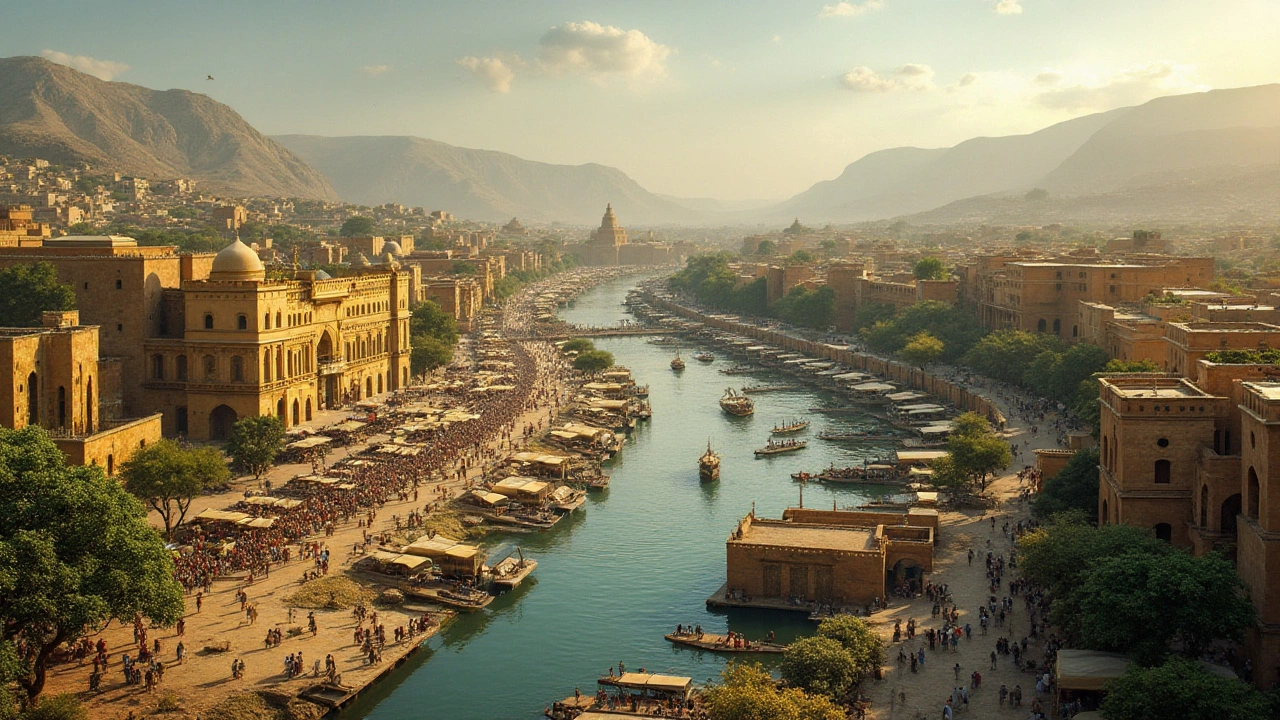
Can You Wear Red to an Indian Wedding? Breaking Down the Dos and Don’ts
Thinking about wearing red to an Indian wedding? This article explains why red is so special, who usually wears it, and whether guests can pull it off too. Get straightforward tips about dress codes, guest etiquette, and what hosts might expect. Make sure you don’t accidentally steal the spotlight from the bride. Let’s cut through the confusion and help you pick the right outfit.

Ayurveda First 40 Days: Why This Postpartum Practice Matters
The Ayurveda first 40 days is a time-honored Indian practice focused on supporting a mother’s healing and bonding after childbirth. It involves mindful rest, special foods, gentle routines, and care rituals to restore her body and mind. This article breaks down what actually happens during these crucial weeks and why modern moms are rediscovering these ancient tips. You'll find real examples, practical ideas, and learn how this tradition can fit into contemporary life. If you're curious about postpartum care or want to support someone after birth, this guide has you covered.

Origins of Indian Heritage: Unveiling Ancient Traditions
Indian heritage is a rich tapestry woven with myriad traditions, languages, and customs. Dating back thousands of years, it encompasses the legacies of the Indus Valley Civilization, the Vedic Era, and the golden ages of empires. This article delves into the origins of Indian heritage, exploring how historical events and cultural exchanges shaped the nation. Learn about the influences that have contributed to India’s vibrant cultural landscape.